
Graph-4 Nominal_GDP_for_countries_1980_2022
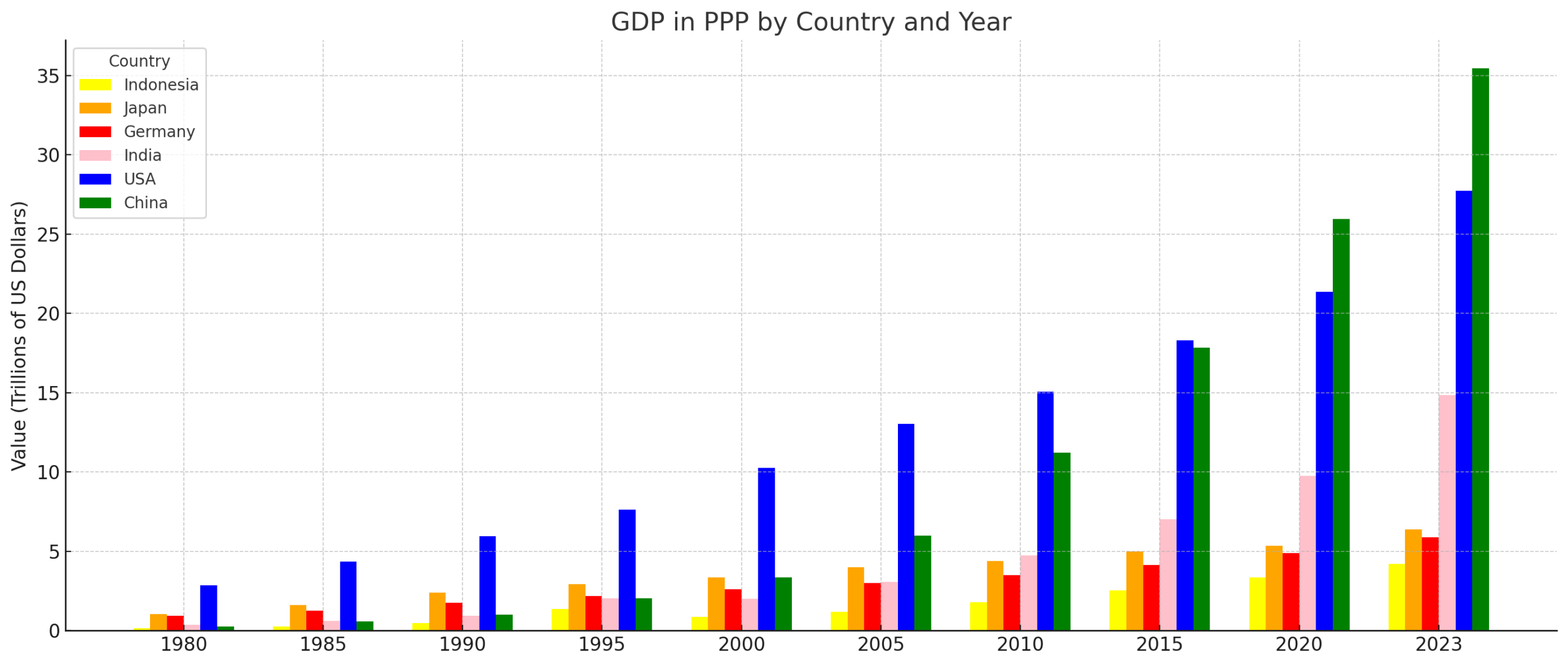
Graph-5 ppp_GDP_for_countries_1980_2022
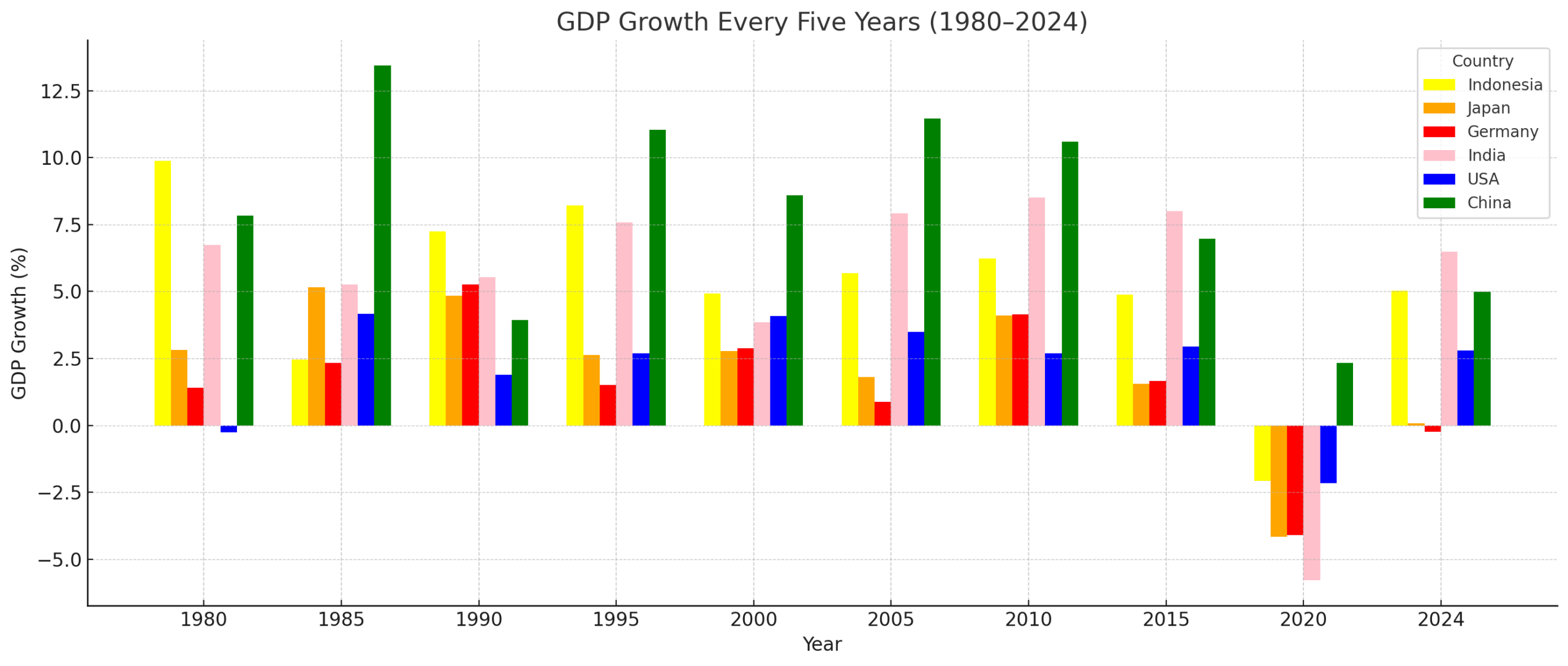
Graph-3 GDP_growth_for_countries_1980_2024.png
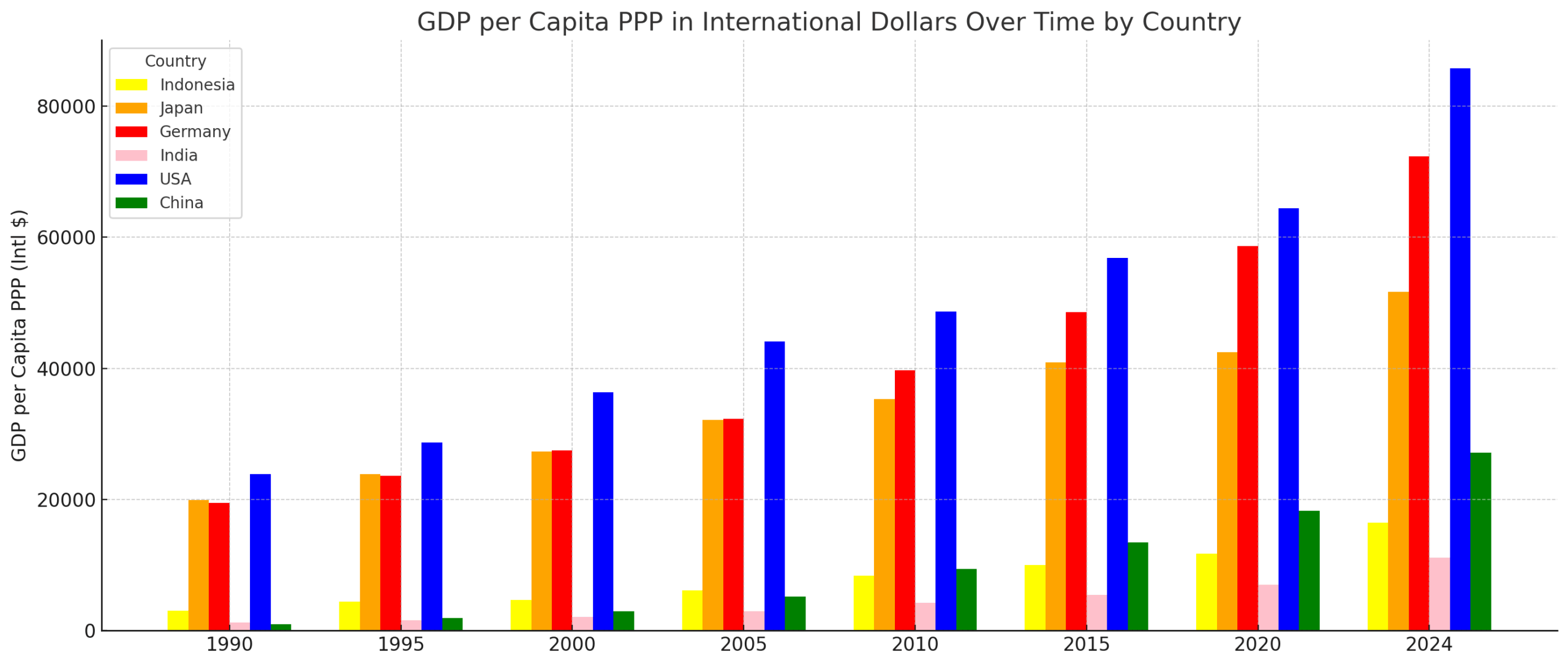
Graph-8 GDP_per_capita_ppp_cur_intld_for_countries_1980_2024
China has grown its economy tremendously since it started modernization in 1979. Graph-4) shows China’s nominal GDP was 18.3 Trillion USD in 2023, ranked second in the world. But if the GDP was measured in purchasing power parity (more acceptable practice when comparing the economies of two countries), China’s economy was about 28% larger than USA’s in 2023 (see graph-5). China grew about 10% per year from 1981 to 2011. In the 13th five-year plan (2016-2020), China changed its economic model to “high tech design and build in China”. It is growing at over 5% per year (see graph-3). But because of its large population, its GDP per capita is a modest 27K per year, about the same level of Poland and Portugal (see graph-8).

Graph-1 agriculture_percentage_of_GDP_for_countries_1980_2024
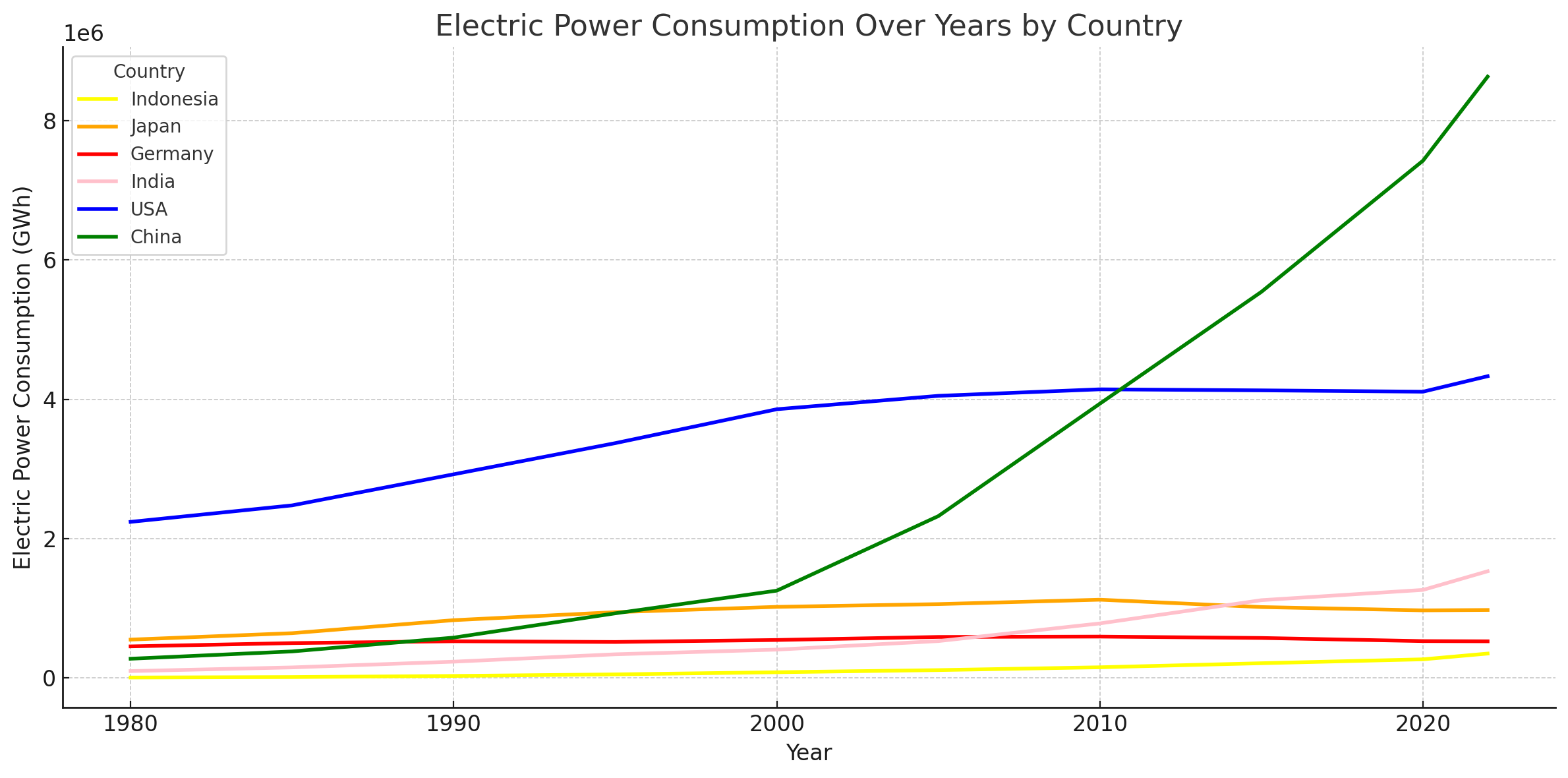
Graph-6 electric_power_consumption_for_countries_1980_2024
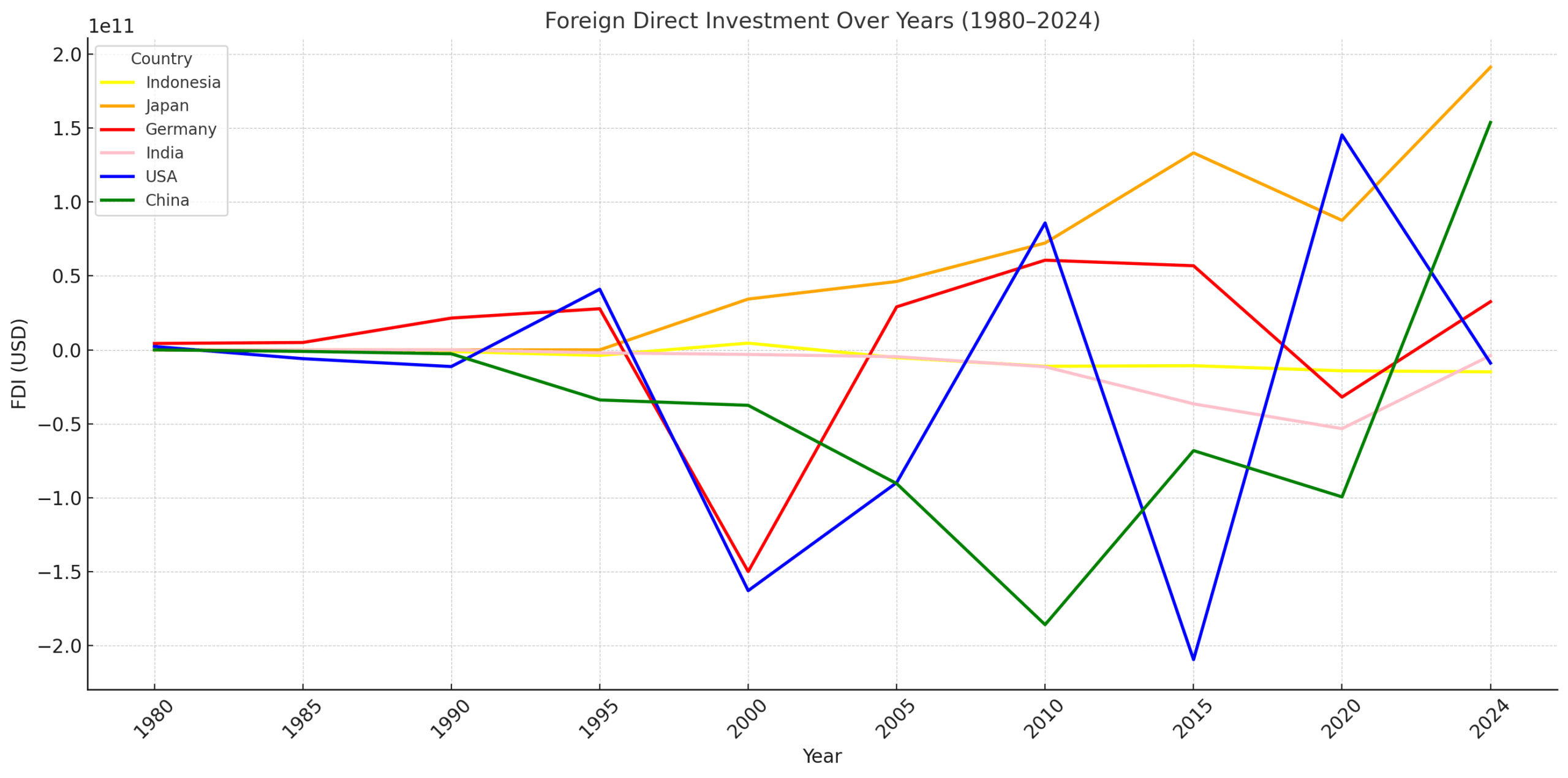
Graph-2 foreign_direct_investment_for_countries_1980_2024.
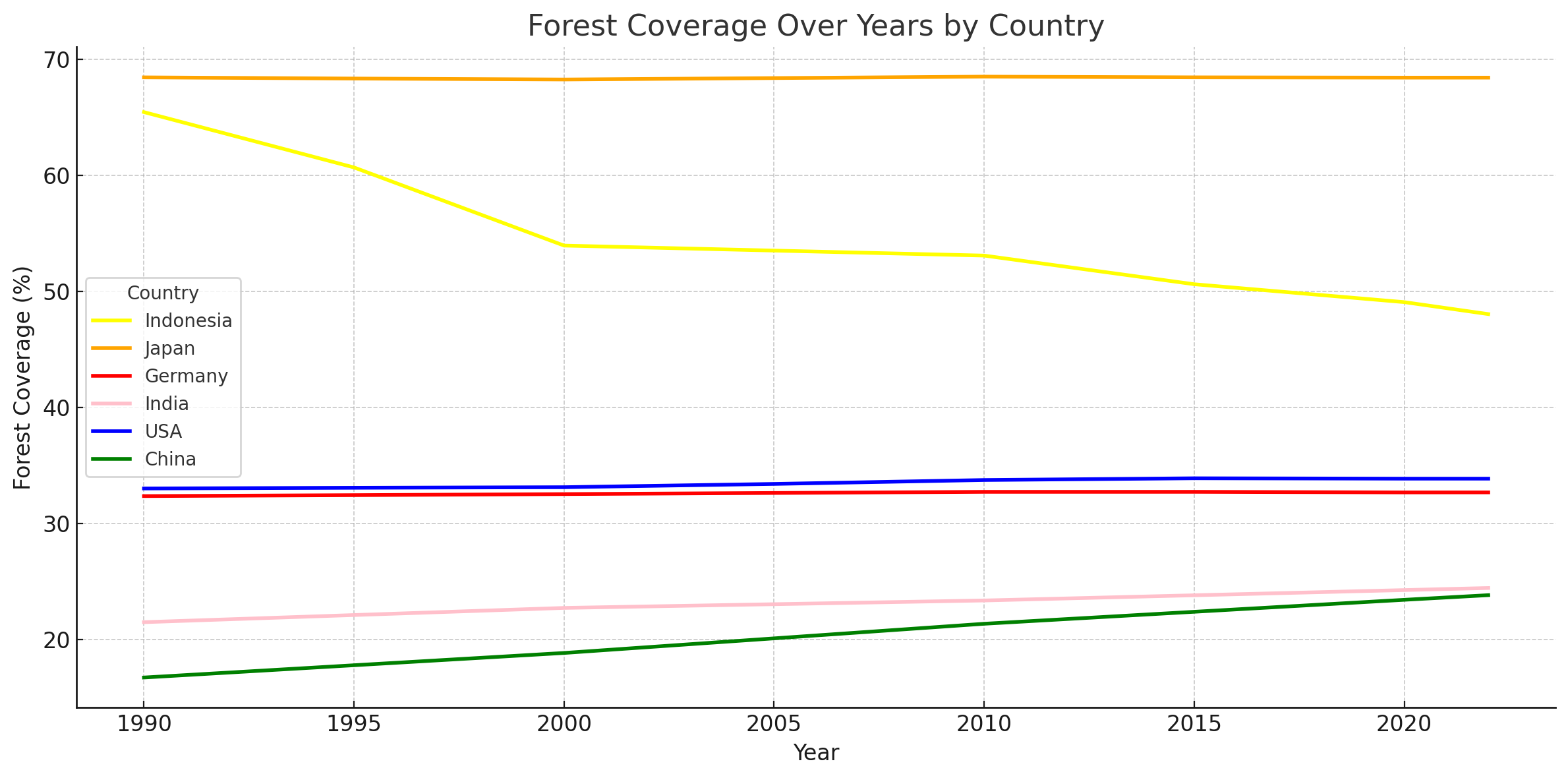
Graph-7 forest_coverage_perc_for_countries_1980_2024
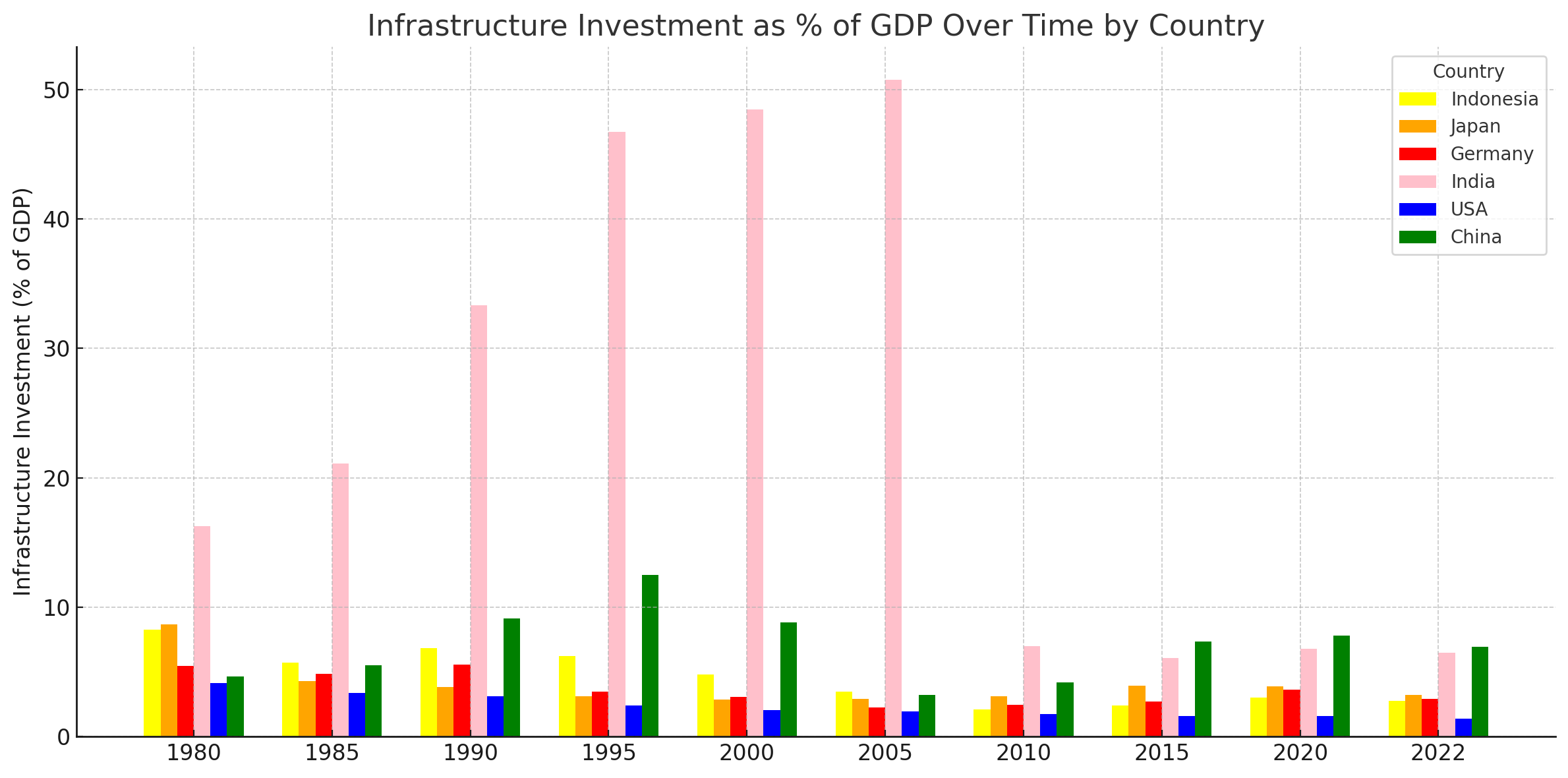
Graph-12 infrastructure_percentage_for_countries_1980_2022
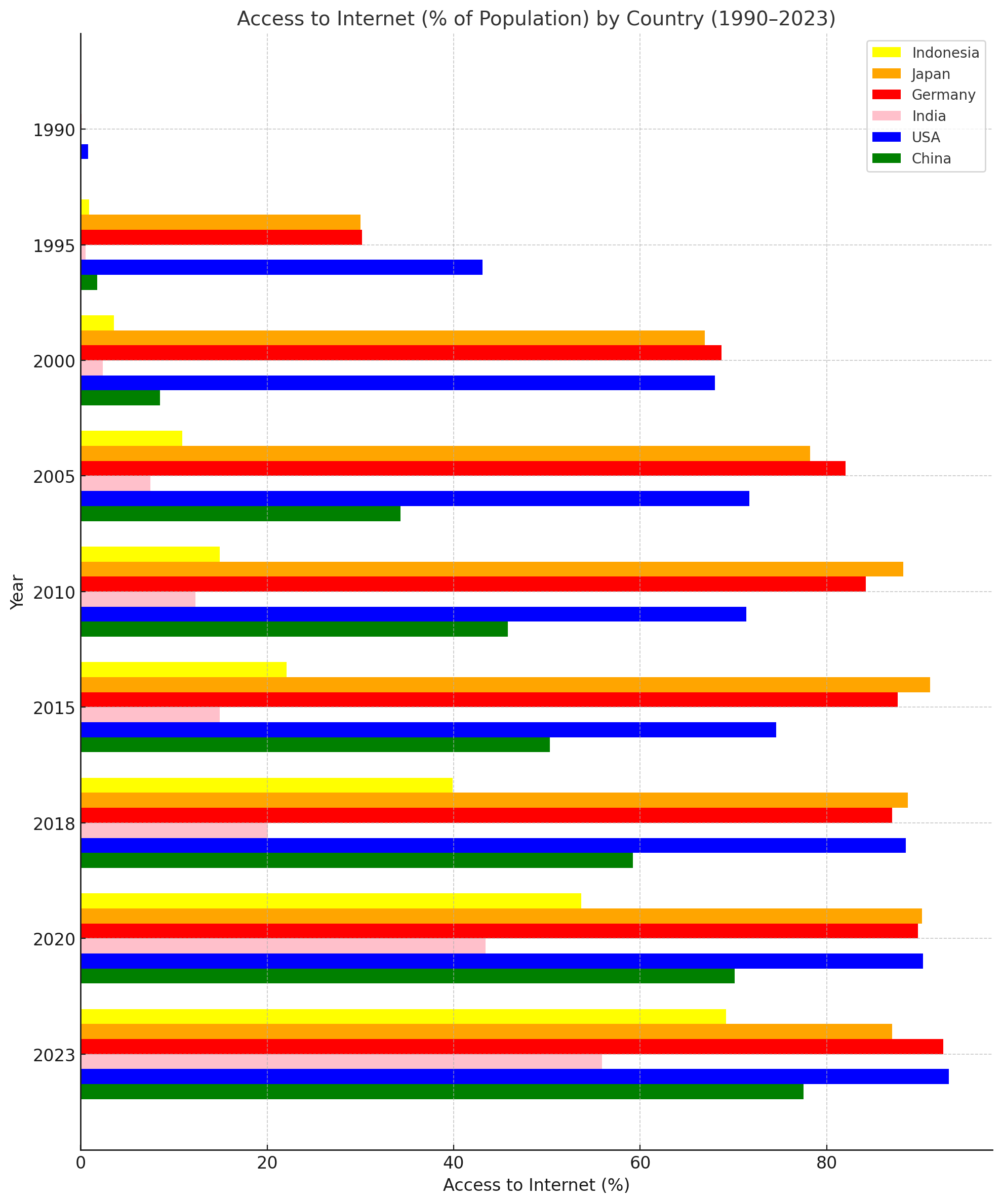
Graph-14 perc_population_use_internet_for_countries_1980_2024

Graph-16 population_perc_pass_2yrs_tertiery_edu_by_countries_1980_2024
If we look further into the progress of the country, China becomes more and more industrialized and the share of GDP in agriculture is dropping (lower than 7% in 2024, see graph-1). At the same time, the US and China are still the top destiny of foreign direct investment (150B USD foreign investment inflow for China in 2024, see graph-2). The country keeps a significant investment in infrastructure (about 7% of GDP in 2022, see graph-12). The internet coverage (4G and 5G) can reach every city and village in the rural area (see graph-14 for the percentage of population using the internet). It also has a sufficiently educated and skilled workforce (about 227 millions with minimum 2 years college education or above in 2020, see graph-16). The country also has invested a lot on electricity (see graph-6 for electricity consumption). It would have plenty of electricity to power the AI data center in the coming AI era.
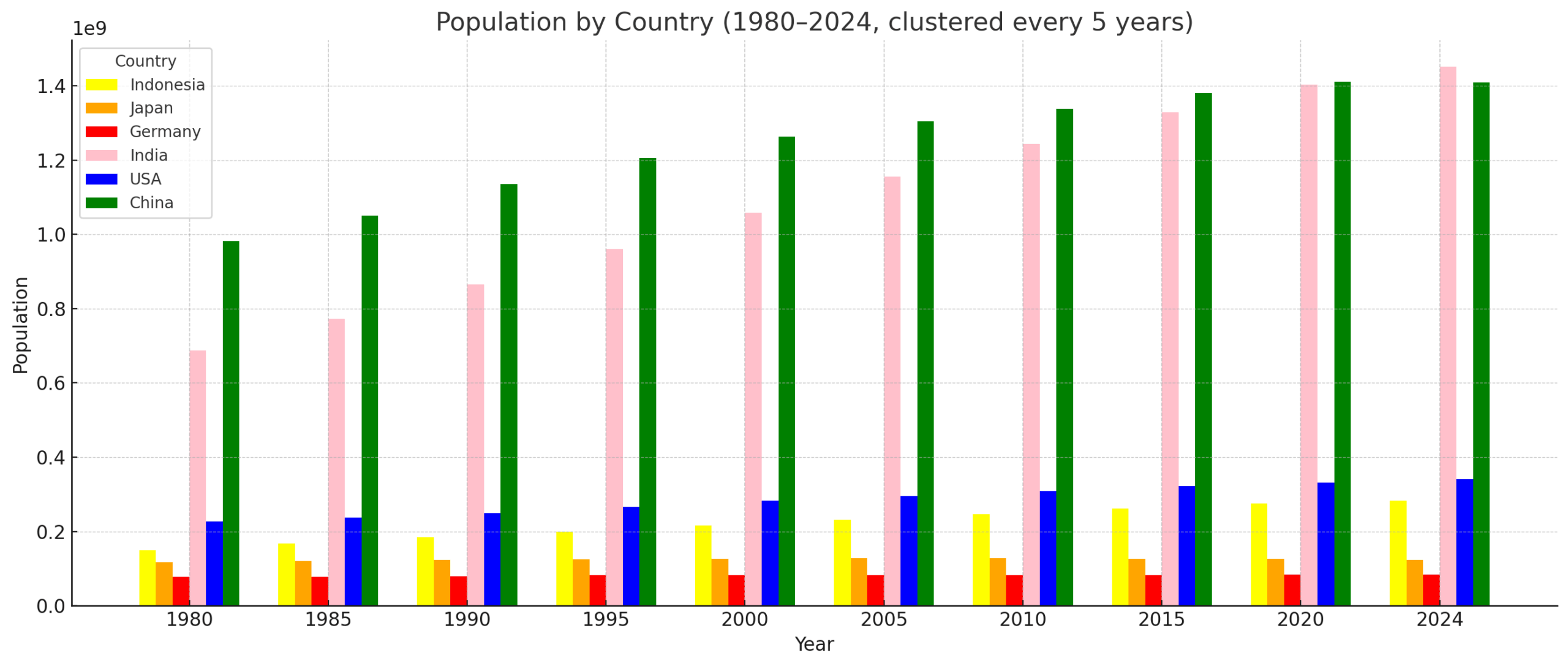
Graph-18 population_for_countries_1980_2024
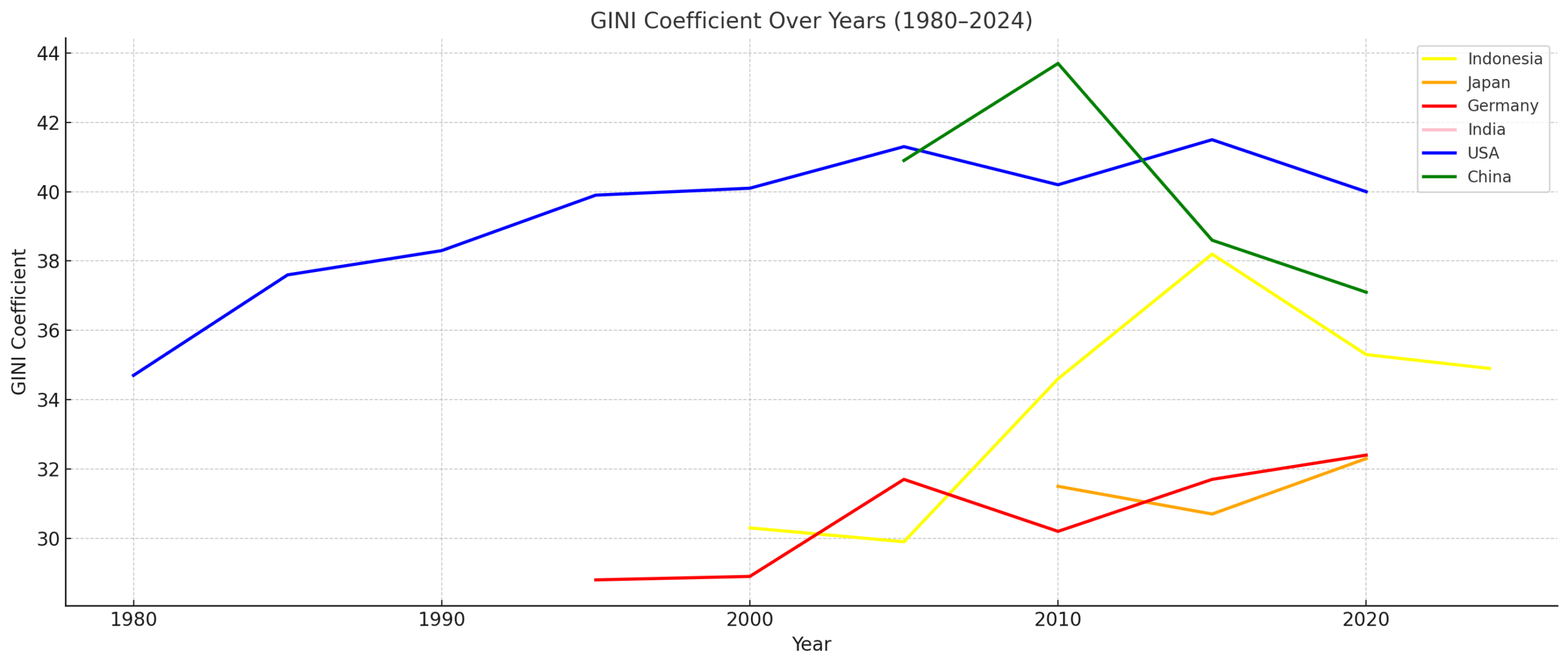
Graph-9 GINI_index_for_countries_1980_2024
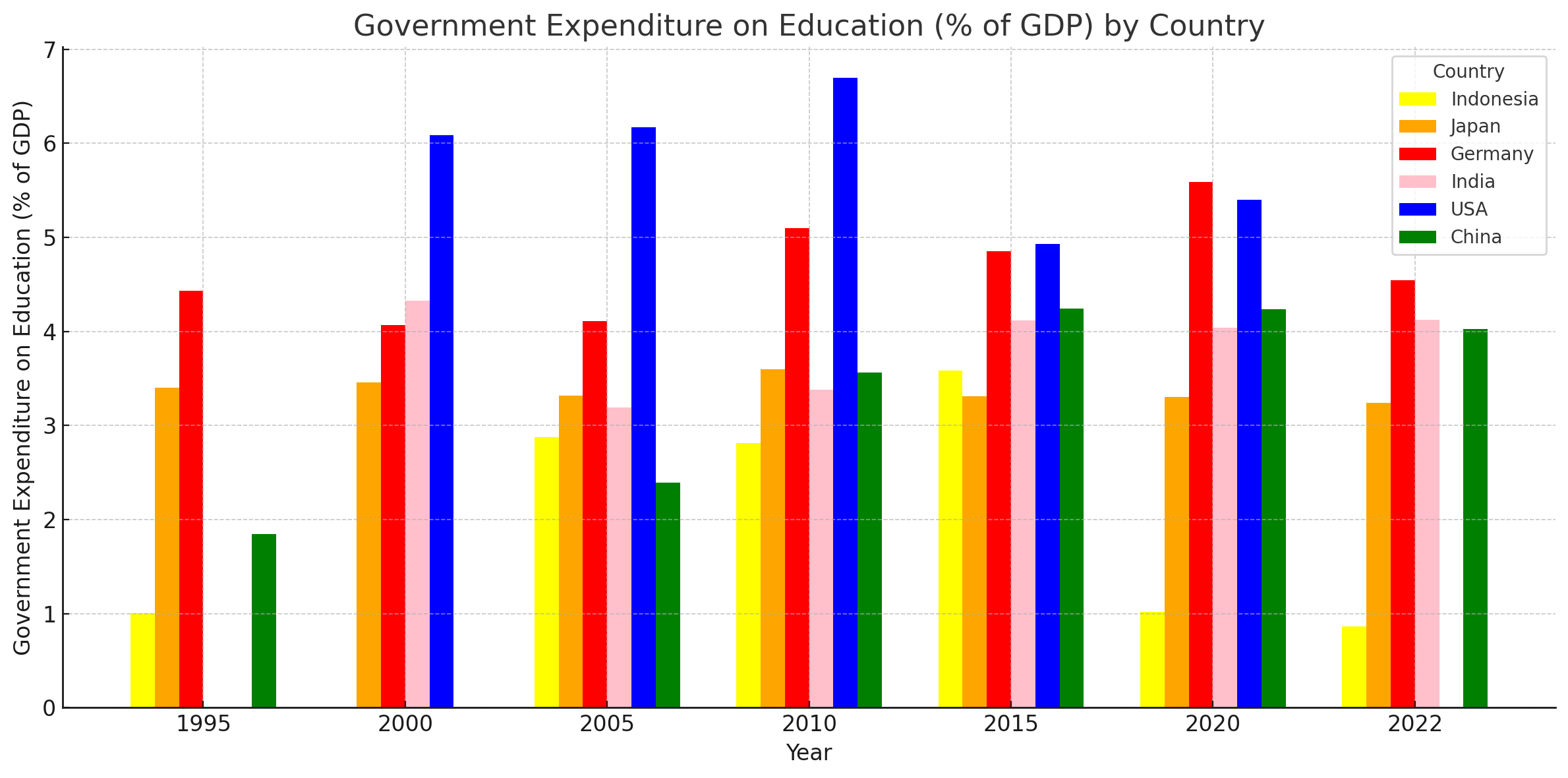
Graph-10 government_exp_on_education_for_countries_1980_2024
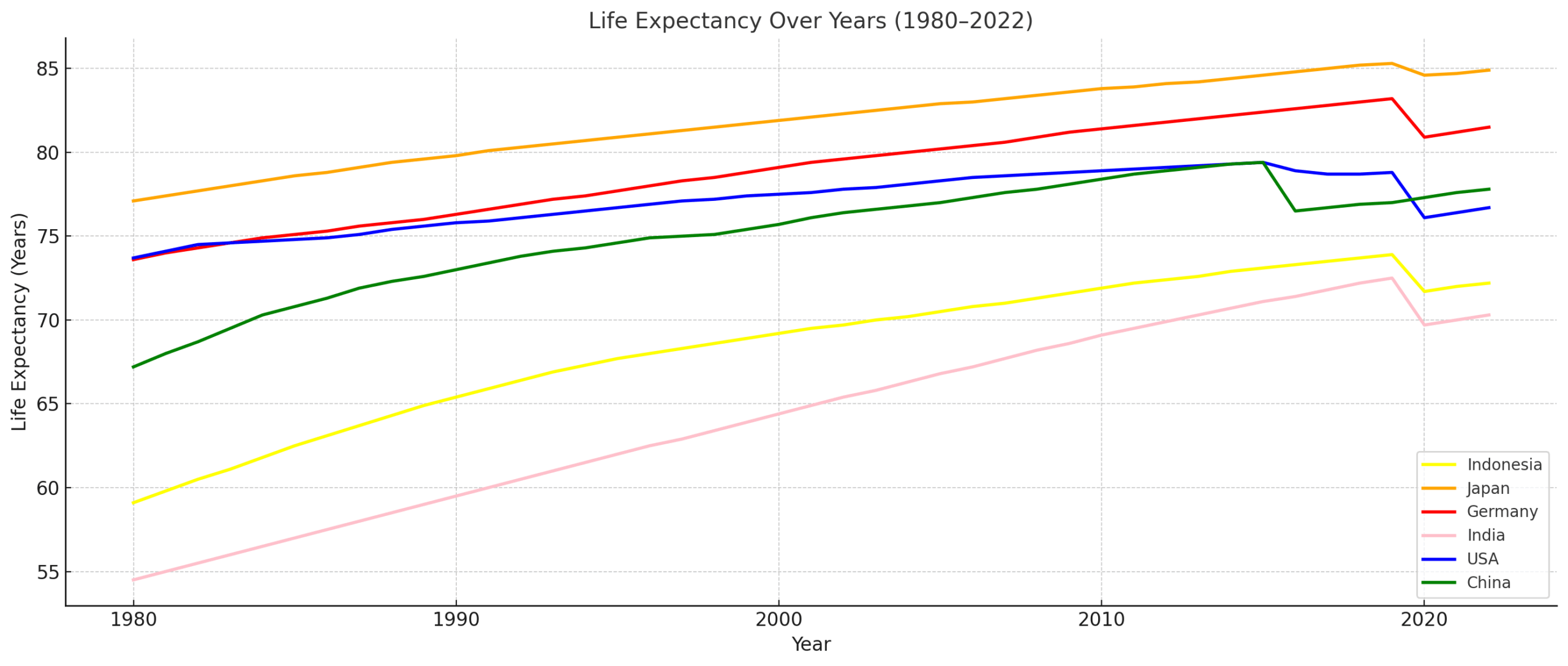
Graph-13 life_expectancy_for_countries_1980_2022
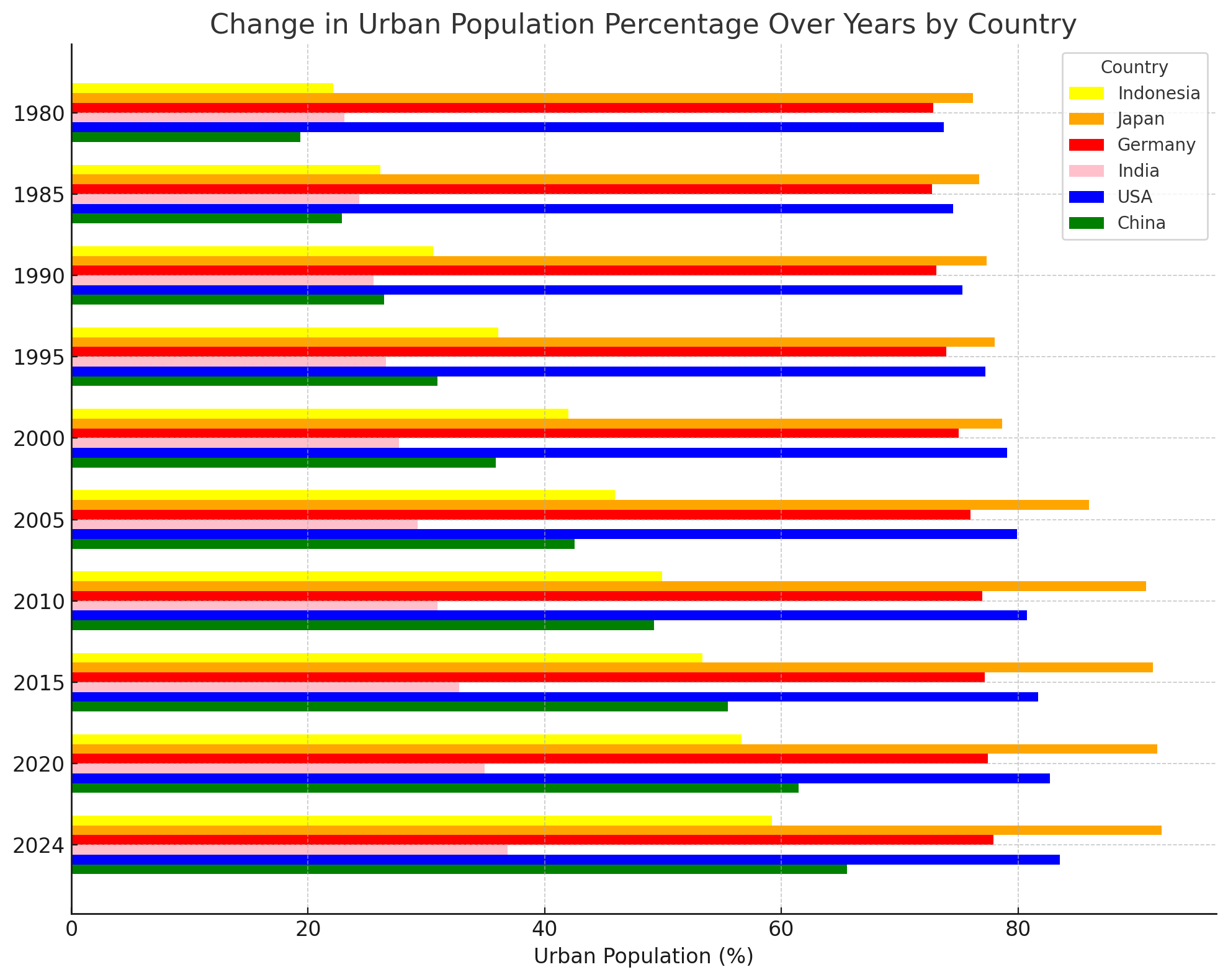
Graph-17 urban_population_for_countries_1980_2024
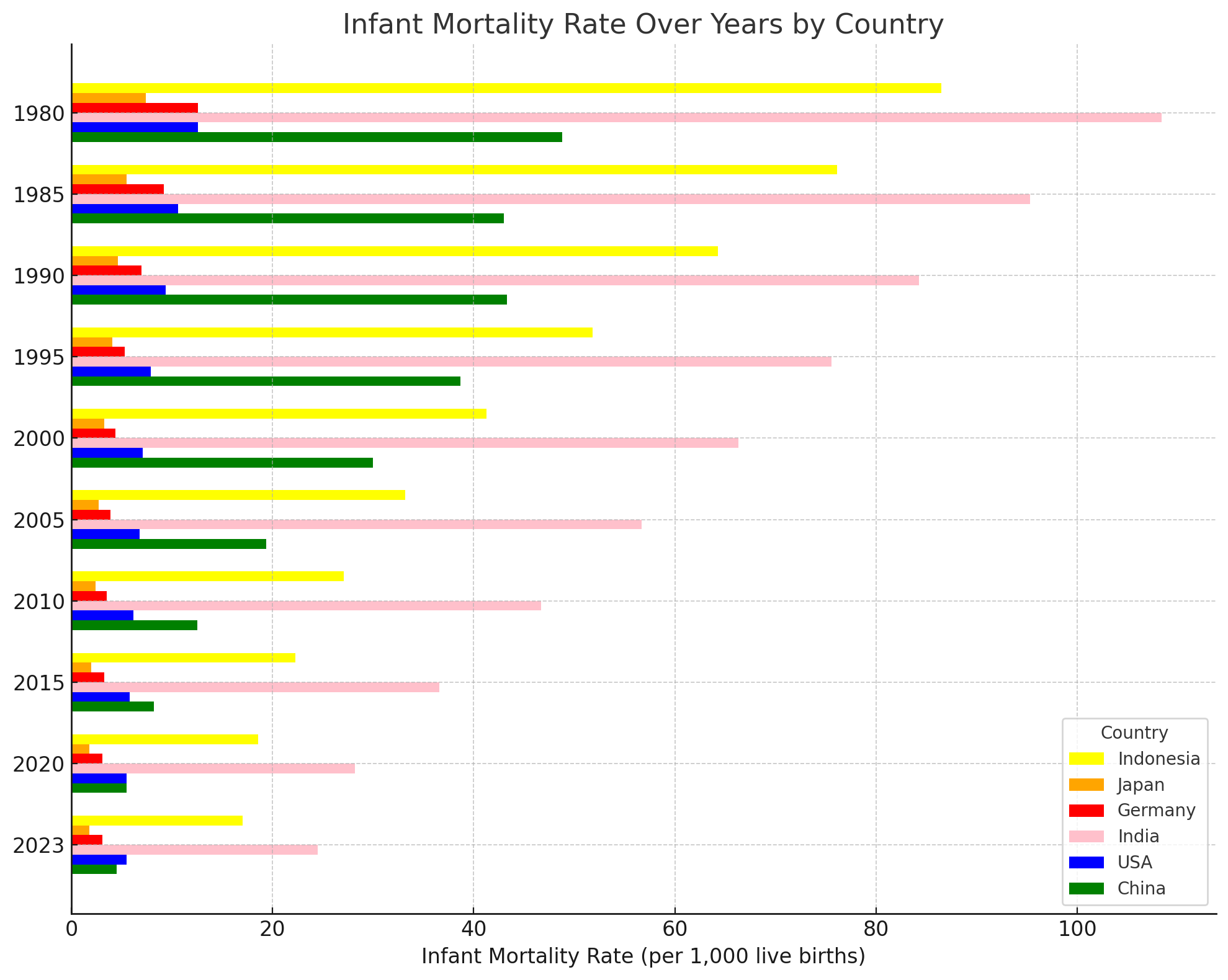
Graph-11 Infant_mortality_for_countries_1980_2024
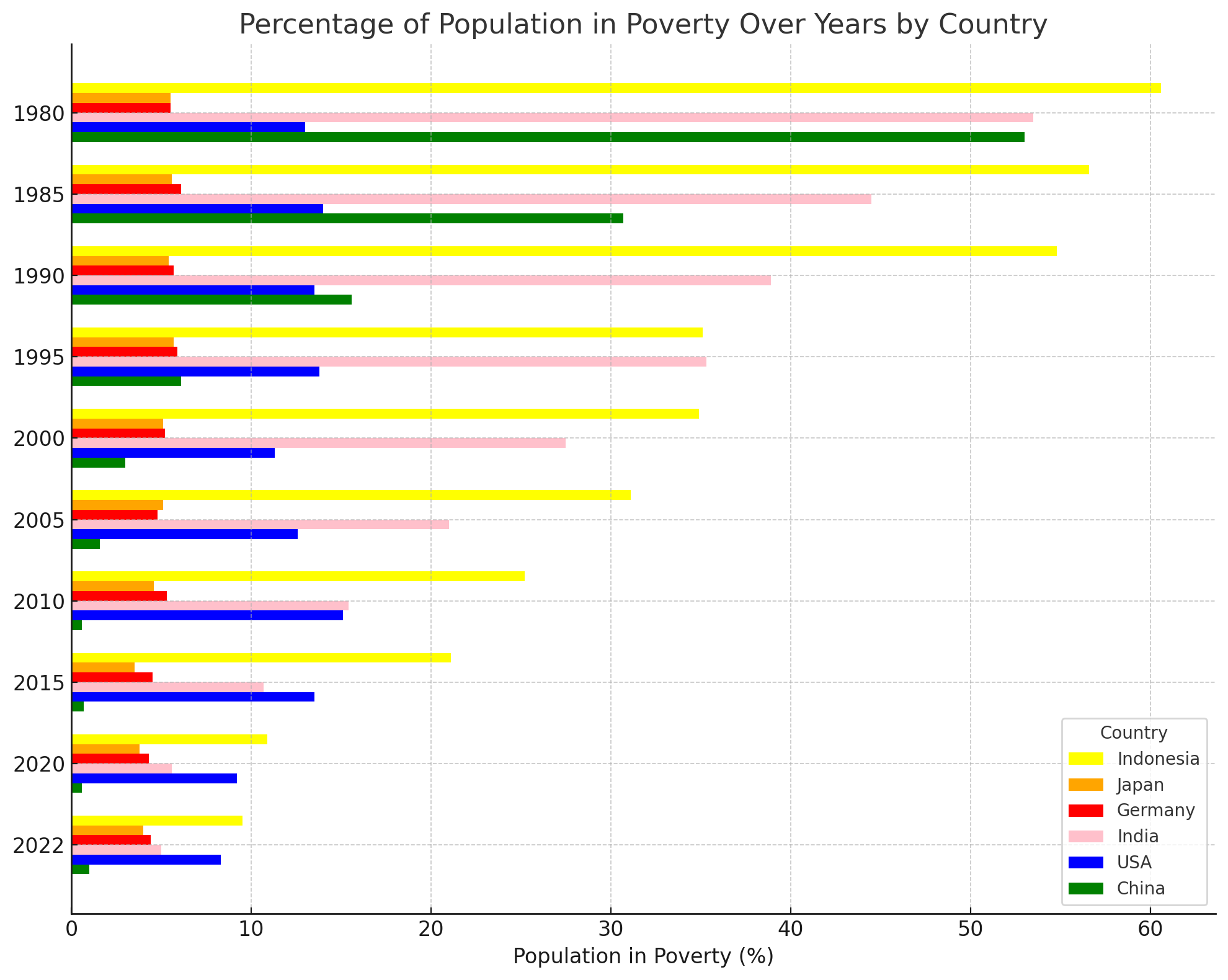
Graph-15 perc_poverty_for_countries_1980_2022
China has the second largest population in the world (see graph-18 for China population. India passed China in population in 2023). About 65% of the population live in cities (see graph-17 for urban population). The government spends a lot on education (see graph-10 for expenditure as percentage of GDP), health care (see graph-11 for infant mortality rate and graph-13 for life expectancy), and poverty alleviation (see graph-15 for percentage of population in poverty). In the last twenty years, the government has made lots of efforts in raising the household incomes in the rural area. They have been successful in reducing the income disparity between the rich and the poor (see graph-9 for GINI index). The country is on the right track to accomplish its goals for 2049.




